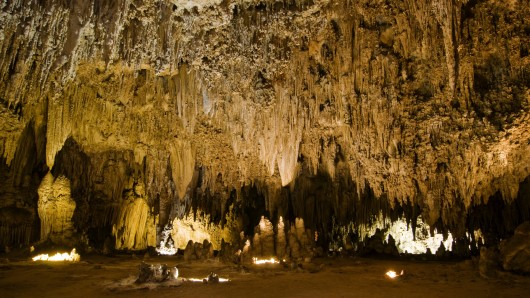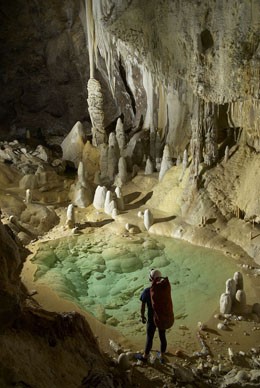Antibiotic resistant bacteria discovered in isolated New Mexico cave
23:31 April 17, 2012

Anitbiotic-resistant bacteria have been discovered in the Carlsbad Caverns National Park (Photo: Shutterstock)
Research into the growing emergence of drug-resistant bacteria could be greatly assisted by the discovery of bacteria from deep within Lechuguilla Cave in New Mexico. The previously unknown strains of bacteria, which have never before been exposed to humans, were found to possess a naturally occurring resistance to multiple types of antibiotics that doctors currently use to treat patients. This means that these forms of bacteria may have been exposed to naturally occurring antibiotics which, in turn could be used against currently untreatable infections.
Scientists from McMaster University and the University of Akron discovered the bacteria in deep recesses of a cave that has until recently been isolated from human contact. It was found that none of the bacteria can cause diseases in humans and have never been exposed to human sources of antibiotics. But remarkably, all of the cave bacteria are resistant to at least one known antibiotic, and some have been found to be resistant to at least 14 different antibiotics.
The Lechuguilla Cave in New Mexico
The previously unknown bacteria seem to have built up a resistance to the natural antibiotics present in this isolated environment over a period of possibly millions of years. The pristine Lechuguilla Cave, located in the Carlsbad Caverns National Park, has had restricted access, limited to scientific researchers since its discovery in 1986. It is 1,604 feet (489 m) deep and surrounded by impermeable rock, meaning it can take up to 10,000 years for water to reach its deepest depths. In this environment, free from the influence of human derived antibiotics, the bacteria have developed defenses that have surprised researchers.
"Our study shows that antibiotic resistance is hard-wired into bacteria. It could be billions of years old, but we have only been trying to understand it for the last 70 years," says Gerry Wright, scientific director of the Michael G. DeGroote Institute for Infectious Disease Research. "This has important clinical implications. It suggests that there are far more antibiotics in the environment that could be found and used to treat currently untreatable infections."
Resistance to antibiotics is a growing worldwide concern, with much of the resistance attributed to the over-use of antibiotics in humans and animals, and heavy use in agriculture. Antibacterial-resistant strains, or "superbugs," now contribute to a number of diseases that were traditionally well-controlled. The implications of this discovery could mean that a new breed of antibiotics could emerge to fight off an increasing number of infections.
Source: McMaster University
Copyright © gizmag 2003 - 2012 To subscribe or visit go to: http://www.gizmag.com
